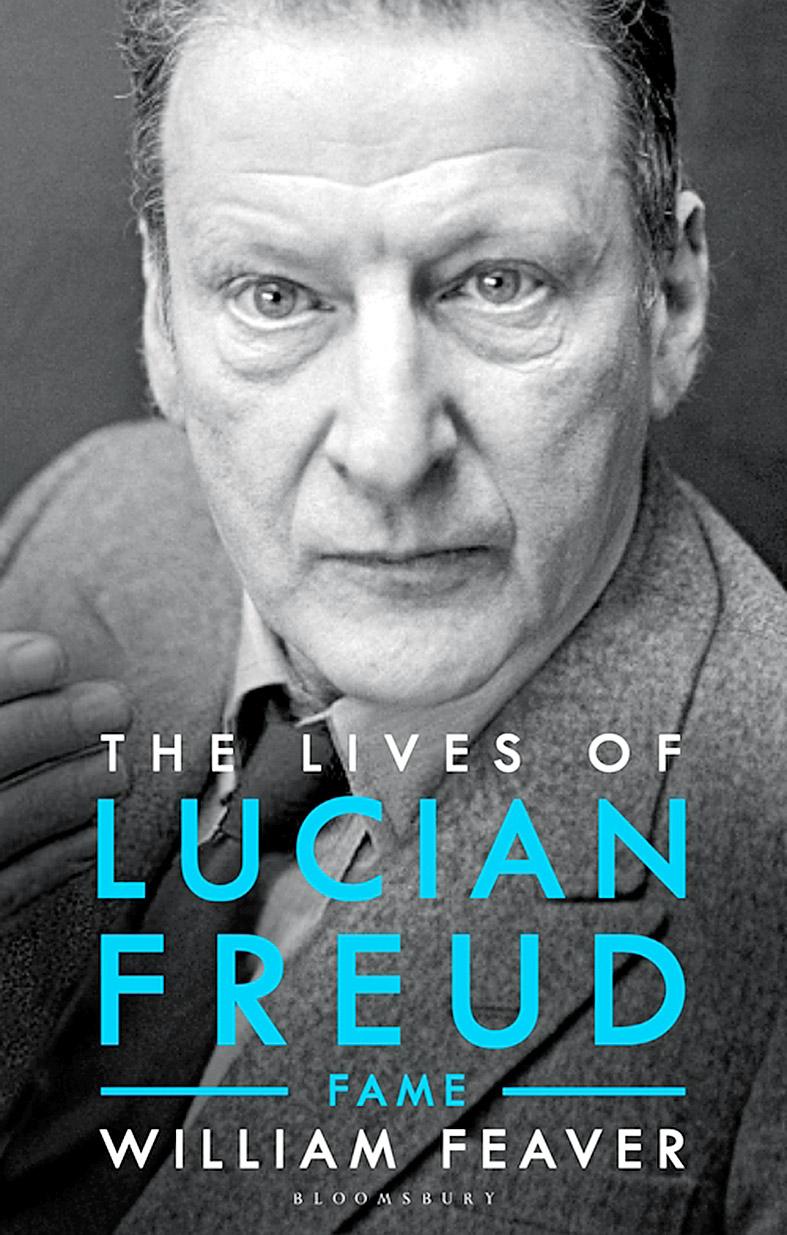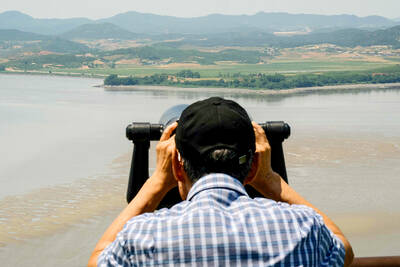When the second volume of William Feaver’s fat and extremely juicy biography of Lucian Freud begins, the artist is middle-aged: not far off 50, and still shinning up his lovers’ drainpipes (in this case, Jacquetta Eliot, the Countess of St Germans, with whom he’ll have a son, Freddy). But even as the shenanigans continue (and they will endure even into his final years — as a sick, old man, his sexual pride induces him to tell his assistant David Dawson that the blood on his sheets, the result of one of his nosebleeds, “might be a girl’s”) the reader detects a certain change in atmosphere.
This has to do not only with Freud’s growing success — in 1974, there will be a retrospective of his work at the Hayward Gallery; his prices will shortly rise dramatically — but with his ambition.
“How far can you go?” he would sometimes murmur to himself, looking at a painting that was almost complete. The answer was: much further. Ahead of him lie another 40 years in the studio.

Feaver’s narrative, peppy and mostly nimble, is based in part on the near daily phone calls and many encounters the two men had over several decades (as the artist RB Kitaj once told him, not entirely accurately, he played Boswell to Freud’s Johnson).
What’s good about this is that you can hear Freud’s voice on the page, which is thrilling when he’s talking about art (“You feel he’s telling lies,” he says of Caravaggio, getting straight to the heart of the matter).
What’s bad about this is that, as Dawson notes: “What he [Freud] says and how he feels are not the same thing. Ever.”
Their somewhat symbiotic relationship also means that Feaver is apt to accept Freud’s disdain for interpretation, whether of art or human nature. Early on, a bit comically, he asks the artist if Naked Man With Rat (1977-8) relates to Notes Upon a Case of Obsessional Neurosis by his grandfather, Sigmund Freud — an essay about a young man tortured by rats or the thought of rats, viz the anal erotic source.
But, no. His model just happened to like the rat. After this, he resists the temptation to indulge in what Freud called “the dodgy therapeutic aspect” of connecting life and work.
But this isn’t to say that such bonds aren’t to be found if you look. Yes, the book bulges with gossipy stuff. Jerry Hall, Kate Moss and the Queen all have walk-on parts. Freud can be superbly waspish.
“He even threatened me with theater tickets,” he says of Andrew Lloyd Webber’s attempts to woo him.
But its deepest fascinations have nothing to do with the hangers-on and the wannabes (a vicar with no ears writes to Freud, longing for his luglessness to be recorded for posterity). By now, he has abandoned many women; he has fathered an unknown number of children. Yet it remains difficult to harden one’s heart against him, and not only because he is the brilliance in the room.
For one thing, there is the uncomfortable fact that most of the women and children are able to accept, even to understand, what is prone to make outsiders sententious.
Jacquetta Eliot writes FART on his Bentley, but his ability to get things “wrong” — when she has her wisdom teeth out, he gives her a pineapple — pulls on her heart almost as effectively as what someone else calls his “disarming variations on gallantry.”
If he is vicious, he’s just as often sweet. If he is selfish, he can also be instinctively kind. You feel for the children he excludes. But when his daughter Esther describes how she would scrape her dinner unhesitatingly into the bin if he called to invite her for supper, you sense the excitement that came hand in hand with the suffering. Lots of men cover the emotional Eiger inside them with performative empathy; at least in the case of Freud, everyone knew crampons would be required from the start.
And then there’s what I came to see as his particular burden. I don’t mean his work, and all that it meant to him; his genius, if you like. What I mean is that nothing is in check. His character is somehow untrammeled — what his friend Frank Auerbach regarded as his intuitive unreservedness. If you want the expressiveness — missing it so much, he draws himself weeping when he lends Michael Andrews’s marvelous balloon painting Lights VII: A Shadow to a gallery — then you have to take the self-absorption, too (if not the posting of turds through enemies’ letter boxes). I’m not making excuses for him when I say that he seems to have experienced a kind of duty to his own irresponsibility.
Pondering both the rubble of his relationships and his unyielding gaze as a painter, the question of lovelessness was — is — bound to arise. But when one curator put this in writing, Freud was furious.
Emotion was a recipe for “bad art,” but he was not unfeeling. In some ways, he was too feeling. As for the question of monogamy, you might as well “tell a dog to be vegan.”
To Auerbach, he was more vivid than other people — more nervous, more simple, more honest and Feaver’s great and generous achievement in his book is to enable us to imagine this. Its last lines — Freud tells him, somewhere towards the end, that he’s always liked lipstick on the teeth — are so perfect.
Somehow, they say it all. Dress up, go out, get laid. And then try to get it all down in your work: “Tell people you’ve been alive.”

Not long into Mistress Dispeller, a quietly jaw-dropping new documentary from director Elizabeth Lo, the film’s eponymous character lays out her thesis for ridding marriages of troublesome extra lovers. “When someone becomes a mistress,” she says, “it’s because they feel they don’t deserve complete love. She’s the one who needs our help the most.” Wang Zhenxi, a mistress dispeller based in north-central China’s Henan province, is one of a growing number of self-styled professionals who earn a living by intervening in people’s marriages — to “dispel” them of intruders. “I was looking for a love story set in China,” says Lo,

It was on his honeymoon in Kuala Lumpur, looking out of his hotel window at the silvery points of the world’s tallest twin skyscrapers, that Frank decided it was time to become taller. He had recently confessed to his new wife how much his height had bothered him since he was a teenager. As a man dedicated to self-improvement, Frank wanted to take action. He picked up the phone, called a clinic in Turkey that specializes in leg lengthening surgery — and made a booking. “I had a lot of second thoughts — at the end of the day, someone’s going

In the next few months tough decisions will need to be made by the Taiwan People’s Party (TPP) and their pan-blue allies in the Chinese Nationalist Party (KMT). It will reveal just how real their alliance is with actual power at stake. Party founder Ko Wen-je (柯文哲) faced these tough questions, which we explored in part one of this series, “Ko Wen-je, the KMT’s prickly ally,” (Aug. 16, page 12). Ko was open to cooperation, but on his terms. He openly fretted about being “swallowed up” by the KMT, and was keenly aware of the experience of the People’s First Party

Standing on top of a small mountain, Kim Seung-ho gazes out over an expanse of paddy fields glowing in their autumn gold, the ripening grains swaying gently in the wind. In the distance, North Korea stretches beyond the horizon. “It’s so peaceful,” says the director of the DMZ Ecology Research Institute. “Over there, it used to be an artillery range, but since they stopped firing, the nature has become so beautiful.” The land before him is the demilitarized zone, or DMZ, a strip of land that runs across the Korean peninsula, dividing North and South Korea roughly along the 38th parallel north. This